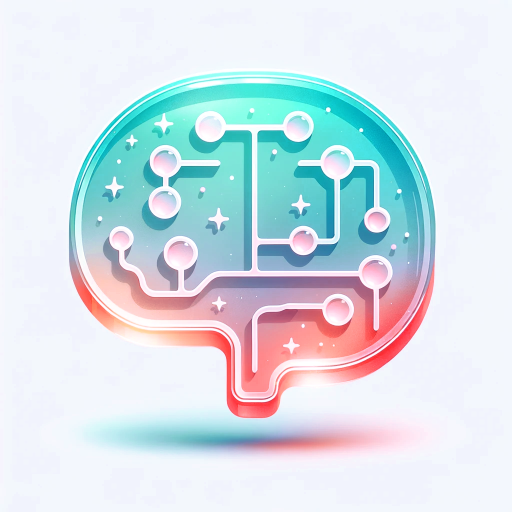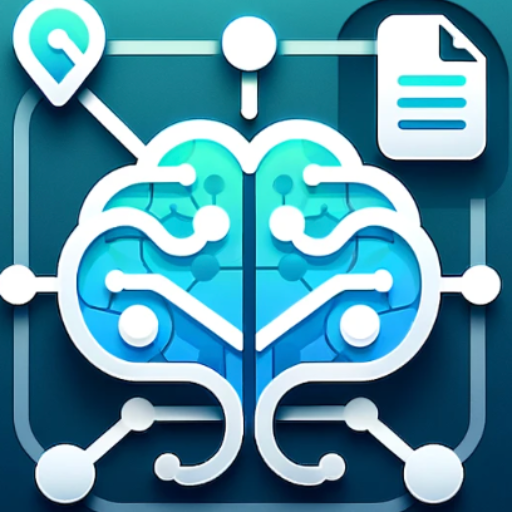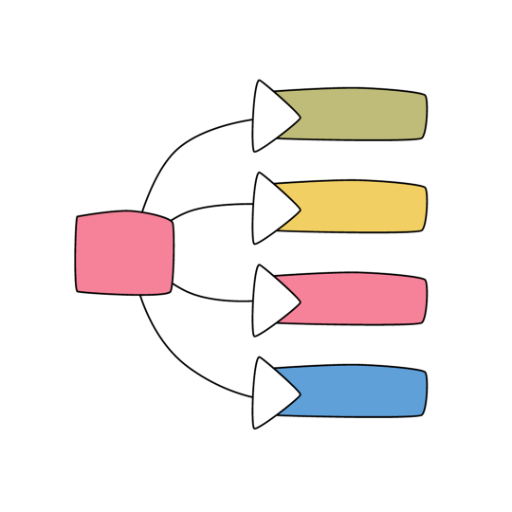Concept map-AI-powered concept mapping tool
AI-driven concept maps for structured thinking
How can I organize a concept map for a history topic?
What's the best way to represent connections in a science concept map?
I need a layout for a concept map in mathematics.
Can you help me with a block diagram for language learning?
Related Tools
Load More
Mindmap Master I Diagrams, Charts, Planner 🧠
Generate an ultra-cool mind map from your concept, a link or an upload file. Support Mindmap, Flowchart, Sequence Diagram, Gantt Chart, Class Diagram, State Diagram, Pie Chart, Bar Chart and more.

Mapa Mental
Especialista em explorar e expandir tópicos

Concept Map
Creating detailed concept maps of Solana's blockchain technology, focusing on key concepts, main ideas, and terms.

Mind Map Generator
Create Mind Map from Document or URL

Mindmap
An innovative GPT designed for self-learning, using real-time mind maps and automatic topic expansion to overcome the linear, disjointed interaction of traditional ChatGPT. [email protected]

Mapas Conceptuales
creacion de mapas conceptuales mediante codigo markmap y mermaid
20.0 / 5 (200 votes)
Introduction to Concept Map
A concept map is a visual tool designed to represent relationships between different ideas or concepts, making it easier to understand complex information. It typically uses nodes (representing concepts) and connecting lines (showing the relationships between them) to organize and structure knowledge in a hierarchical or network format. The purpose of a concept map is to help learners or professionals visualize how concepts are interrelated, promoting a deeper understanding. Concept maps are especially useful for brainstorming, learning new topics, organizing information, and problem-solving. For example, in a biology class, a concept map could be used to visually break down the topic of 'photosynthesis'. The central concept, 'photosynthesis', would be at the center, and branches would link to related sub-concepts like 'light reactions', 'chlorophyll', 'CO2 intake', and 'glucose production'. Each sub-concept can further branch out to finer details, such as the specific chemical reactions involved in each phase. This structure helps clarify how all parts of the process connect, offering a clearer and more integrated view of the entire topic.

Main Functions of Concept Map
Hierarchical Organization of Information
Example
A teacher creating a concept map to introduce the topic of 'Ecosystems' to their class can start with 'Ecosystem' as the root node. From there, branches would connect to 'biotic factors' and 'abiotic factors'. Each of these can be broken down further (e.g., biotic factors might include 'producers', 'consumers', 'decomposers').
Scenario
This function is applied in education, where students need to break down complex topics into manageable and interconnected parts. It is especially helpful for introducing large topics like biology, history, or engineering concepts.
Visual Representation of Relationships
Example
In project management, a concept map can be used to map out the relationships between various departments, tasks, and resources. For instance, a 'Project Launch' node may link to 'Marketing', 'Development', and 'Budget', showing how each department is interconnected and depends on one another.
Scenario
This is ideal for businesses and professionals who need to outline and understand the interactions between various elements in a project or process. It helps visualize dependencies and collaboration points in real-time.
Problem Solving and Idea Generation
Example
A product development team brainstorming ideas for a new smartphone feature might use a concept map. The central idea 'Smartphone Feature' could branch out into categories such as 'User Interface', 'Battery Life', and 'Camera Capabilities'. Each of these can be further expanded with creative ideas or identified challenges.
Scenario
In creative industries or R&D, concept maps are helpful for brainstorming and exploring new ideas. The visual layout helps individuals or teams see all options and pathways, fostering innovation and collaborative thinking.
Ideal Users of Concept Map
Students and Educators
Students benefit from concept maps because they help break down complex subjects into visually manageable pieces, fostering a deeper understanding. Educators can use them to prepare lessons and convey complex topics in a structured, easy-to-follow format. Concept maps are particularly valuable in subjects that involve a lot of interconnected ideas, like science, history, or philosophy.
Professionals in Business and Project Management
Professionals in industries such as business, consulting, and project management use concept maps to outline processes, workflows, and relationships. By visually organizing these elements, they can enhance team collaboration, clarify goals, and solve complex problems more effectively. Concept maps also aid in strategic planning by showing how different tasks, departments, or initiatives are interdependent.

How to Use Concept Map
1
Visit aichatonline.org for a free trial without login; no need for ChatGPT Plus to access.
2
Identify the subject or topic you want to explore. Concept maps are ideal for organizing ideas, so decide whether you are mapping for study, research, brainstorming, or project planning.
3
Break down your subject into key concepts or nodes. Ensure each concept is distinct and represents an important part of the topic. Think in terms of hierarchies and connections.
4
Draw relationships between these concepts. Use arrows or lines to connect them, signifying the flow of information or the logical structure of ideas. Use labels to clarify the nature of these connections.
5
Refine and expand your concept map. Add secondary ideas, examples, or supporting data where necessary. Adjust the structure to make the relationships clearer and more intuitive for deeper understanding.
Try other advanced and practical GPTs
English Edit Plus
Enhance your English with AI-driven precision.

Multilingual Clear Edit
AI-powered editing for multilingual clarity

Ai Edit Image
AI-Powered Image Editing Made Easy

NoteLinkGPT
AI-powered note management

Nursing Student Helper
AI-powered support for nursing students

Real Estate Agent: Placy | Listings, Rent, Realtor
AI-powered real estate listings and rentals

Advanced Physics Problem-Solving Assistant
AI-powered assistant for complex physics problems

Word Search Puzzle Generator
AI-powered word search puzzle creator

Puzzle Innovator For Games
AI-Powered Puzzle Game Design Assistant

Puzzle Solver
AI-Powered Tool for Smarter Solutions

StableDiffusion Prompter
AI-powered creativity unleashed

Retool Helper
AI-powered assistance for Retool development.

- Creative Writing
- Problem Solving
- Brainstorming
- Curriculum Design
- Research Planning
Frequently Asked Questions about Concept Map
How can Concept Maps help me organize my ideas?
Concept maps allow you to visualize ideas in a structured manner, breaking complex topics into smaller, more manageable pieces. By linking related concepts, they help reveal connections and hierarchies, improving both comprehension and retention.
What types of projects are best suited for Concept Maps?
Concept maps are versatile and can be used for a wide range of projects, including academic research, brainstorming sessions, curriculum design, creative writing, and problem-solving tasks. They work well for any task that requires organizing and synthesizing complex information.
Can Concept Maps be shared or collaborated on with others?
Yes, concept maps are often collaborative tools. You can share them digitally for group editing, discussion, or presentation. Many platforms allow real-time collaboration, making them ideal for team-based projects or educational group work.
What are the best practices for creating a clear and effective Concept Map?
Start with a central idea and branch out into related concepts. Keep your map concise by limiting each node to a single concept. Use consistent labels for clarity, and group related ideas together. Always revisit the map to refine its structure.
How does Concept Map differ from other diagramming tools?
Unlike traditional mind maps or flowcharts, concept maps emphasize the relationships between concepts, focusing on both hierarchical and cross-concept links. They are especially useful for capturing complex systems or interconnected ideas in a visual format.